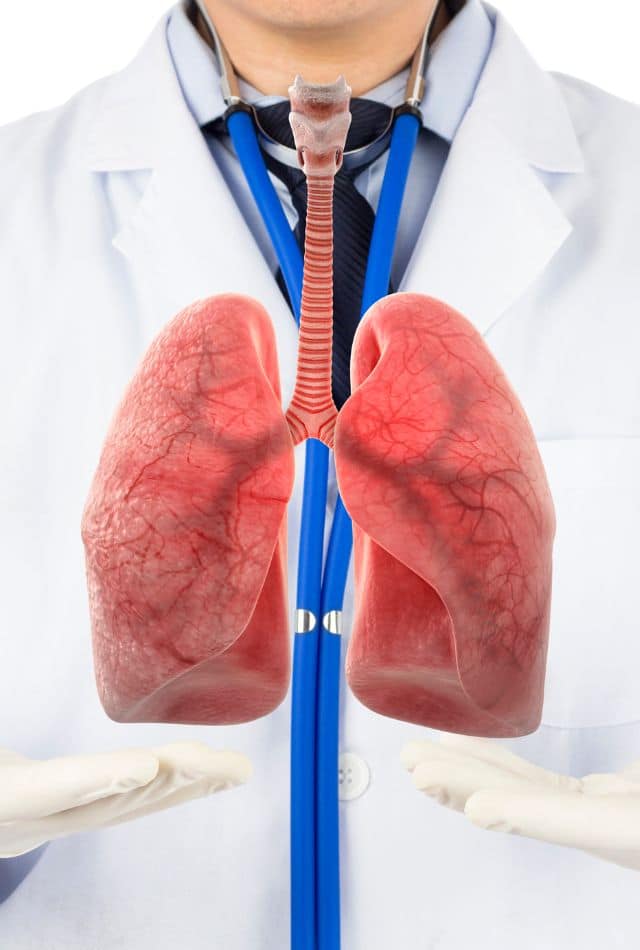Respiratory Alkalosis Lab Values – Overview
Respiratory alkalosis is a condition characterized by a significant decrease in the partial pressure of carbon dioxide (PCO2) in the blood, with or without compensatory changes in bicarbonate levels. Your body’s pH may be higher than usual in this condition. Respiratory alkalosis lab values can help you understand the severity of your condition.
However, the experts can identify differences between fully compensated, partially compensated, and uncompensated conditions.
Respiratory Alkalosis

Respiratory alkalosis can be caused due to an increase in your respiratory rate, respiratory volume (hyperventilation), or both. It can be of two types: chronic or acute. The chronic condition remains asymptomatic in most cases. The acute condition may have symptoms like headache, lightheadedness, paresthesias, confusion, cramps, and syncope.
Experts can clinically diagnose the condition with the help of ABG or Arterial Blood Gas or the measurements of serum electrolytes.
There are two steps to identify respiratory alkalosis with ABG.
#1. You need to check the pH level. If the pH level is over 7.45, it is alkalotic and indicative of respiratory alkalosis.
#2. You must try to determine which system is responsible for this condition: metabolic or respiratory. The partial pressure of carbon dioxide (PCO2) value indicates the respiratory system’s involvement. If the value is below 35 mmHg, it suggests respiratory alkalosis, indicating that the respiratory system is causing the alkalotic state.
Etiology
Respiratory alkalosis is characterized by a significant decrease in the partial pressure of carbon dioxide (PCO2) in the blood, a condition known as hypocapnia. This can happen due to hyperventilation, increased respiratory volume, or respiratory rate. An increase in ventilation generally occurs as a physiological response to conditions such as metabolic acidosis, hypoxia, or increased metabolic demands, such as fever.
However, certain disorders of the central nervous system, like seizures, stroke, or conditions like anxiety and pain, can increase the respiratory rate without any physiological need.
Causes of Respiratory Alkalosis
- Fever
- Salicylate toxicity
- Anxiety or panic
- shock
- Pain
- Trauma
- Fear
- High altitude
- Tumor
- Severe anemia
- Liver problems
- Lung diseases
- Overuse of certain medications
- Neurologic conditions
Who Is at Risk of Respiratory Alkalosis?
People who often experience anxiety, stress, or panic in their lives are at high risk of developing respiratory alkalosis. People on mechanical ventilation are also at higher risk. These breathing machines can deliver a standard breath volume for every breath.
This can lead to hyperventilation if the patient breathes faster than the machine’s set rate. As a result, the experts may need to lower or increase levels of breathing assistance.
Signs and Symptoms
Acute respiratory alkalosis can cause-
- Confusion
- Light-headedness
- Cramps
- Syncope
- Nausea
- Irritability
- Dizziness
- Fatigue
- Discomfort in chest
- Shortness of breath
- Peripheral and circumoral paresthesias
Chronic respiratory alkalosis is generally asymptomatic and shows no signs or symptoms.
3 Types of Respiratory Alkalosis
There are three types of respiratory alkalosis. Respiratory alkalosis lab values can help to identify your condition.
1. Uncompensated Respiratory Alkalosis
This can occur when respiratory alkalosis is present with PaCO2 alkalotic (under 35 mmHg) and pH over 7.45 alkalotic. The metabolic system, marked by the HCO3, does not act to correct it.
2. Partially-Compensated Respiratory Alkalosis
It occurs when respiratory alkalosis is present, indicated by a PaCO2 level below 35mmHg and a pH above 7.45. Then, the metabolic system, marked by HCO3, can act to correct it.
3. Compensated Respiratory Alkalosis
It can occur when respiratory alkalosis is present with a normal pH but closer to PaCO2 alkalotic (under 35mmHg) and a pH over 7.4-7.45 alkalotic. Then, the metabolic system, marked by an HCO3 level, can act to correct it.
When we breathe, we inhale oxygen and exhale carbon dioxide; this process is called gas exchange. When we breathe too fast, we expel too much carbon dioxide and the carbon dioxide pressure in our blood drops. The partial pressure of carbon dioxide is PaCO₂, which is low in cases of respiratory alkalosis!
If you recall our previous article on respiratory acidosis, hypoventilation was a key cause. However, with respiratory alkalosis, hyperventilation is the key cause, which is the opposite.
Treatment
The treatment of respiratory alkalosis generally focuses on underlying causes. The experts can prescribe anti-anxiety medications like lorazepam, buspirone, or diazepam to any anxious patient. The treatment of respiratory alkalosis typically involves addressing the underlying cause and may be covered in educational materials such as nursing pharmacology resources.
Prevention
There are a few techniques to prevent this condition.
- Therapeutic techniques
- Relaxation techniques
- Medications
- Lifestyle techniques
Conclusion
Respiratory alkalosis occurs when there is a lower-than-normal level of carbon dioxide in your blood due to rapid breathing. Rapid breathing can lower the carbon dioxide level in your blood and lead to respiratory alkalosis. However, with proper treatments and prevention measures, this condition can improve with time.
See Also
Respiratory Acidosis Lab Values